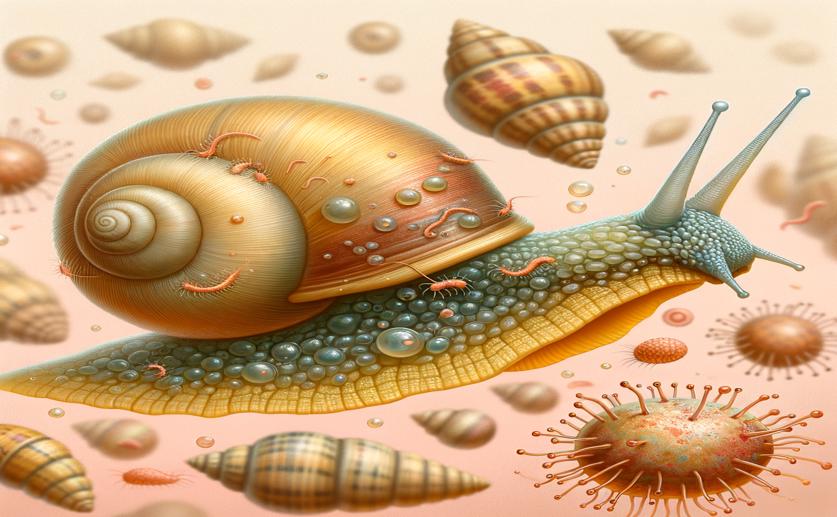
How Different Parasites Affect Snail Genes and Lead to Reproductive Issues
Jim Crocker
18th June, 2024

Image Source: Natural Science News, 2024
Key Findings
- Researchers at the University of New Mexico studied how Biomphalaria snails respond to parasitic infections, focusing on their immune and reproductive systems
- The study found that specific immune-related genes in snails are activated when infected by the parasite Schistosoma mansoni
- Parasitic infections can influence the reproductive processes of Biomphalaria snails, potentially disrupting the parasite's life cycle and reducing transmission to humans
GeneticsAnimal ScienceMarine Biology
References
Main Study
1) Different metazoan parasites, different transcriptomic responses, with new insights on parasitic castration by digenetic trematodes in the schistosome vector snail Biomphalaria glabrata
Published 17th June, 2024
https://doi.org/10.1186/s12864-024-10454-4
Related Studies
2) Compatibility between snails and schistosomes: insights from new genetic resources, comparative genomics, and genetic mapping.
3) A haplotype-like, chromosome-level assembled and annotated genome of Biomphalaria glabrata, an important intermediate host of schistosomiasis and the best studied model of schistosomiasis vector snails.
4) Digenean-gastropod host associations inform on aspects of specific immunity in snails.



 16th May, 2024 | Jenn Hoskins
16th May, 2024 | Jenn Hoskins